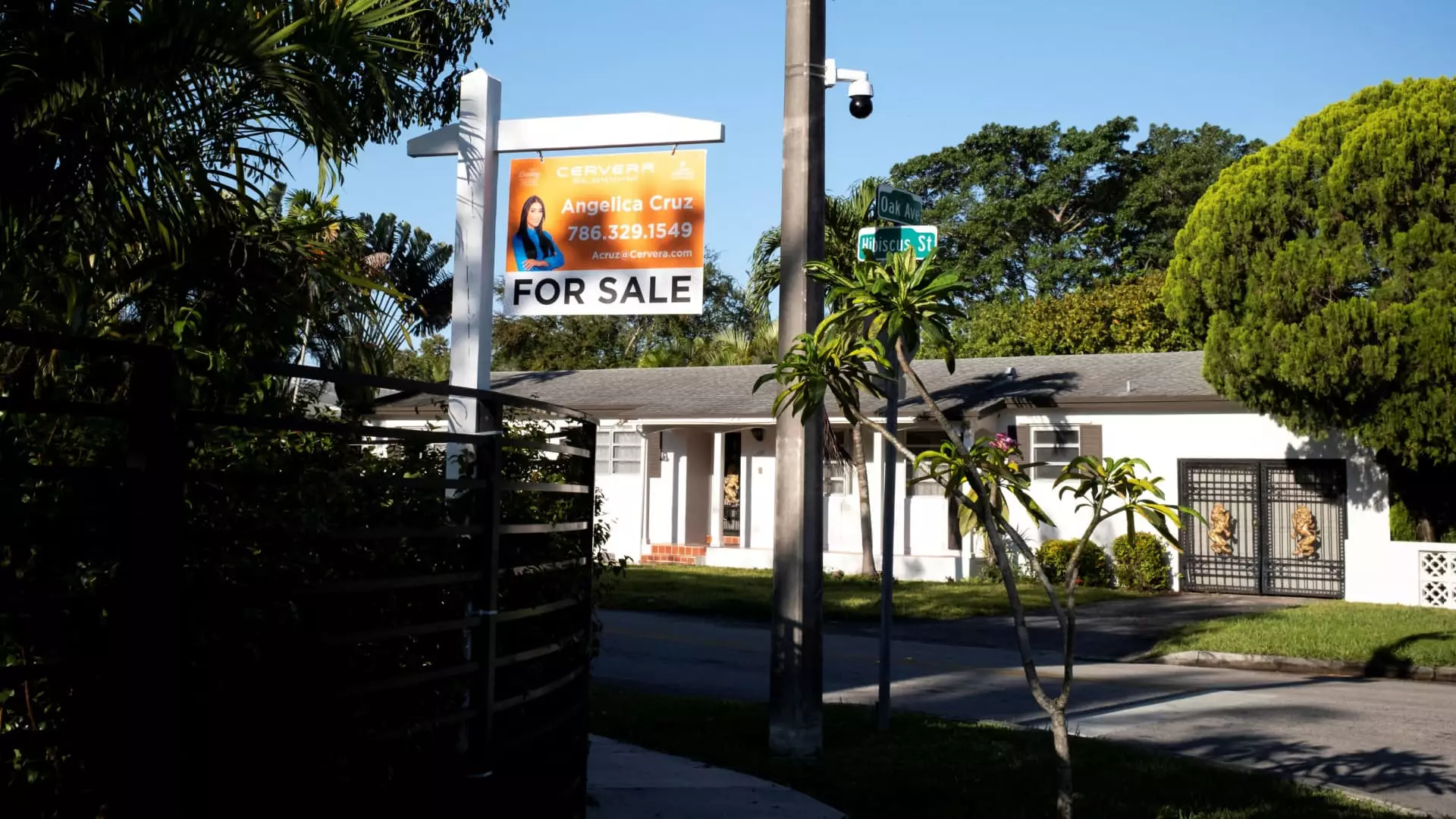The current landscape of the housing market is a stark reminder of the fragility of economic progress. With heightened mortgage rates and a looming uncertainty in the broader economy, the crucial spring selling season has stuttered into a dismal start this year. Reflecting on the statistics released by the National Association of Realtors (NAR), the sales of existing homes plummeted by 5.9% in March, landing at a mere 4.02 million units on a seasonally adjusted annualized basis. Such a figure marks the weakest March since 2009—a haunting echo of the last economic downturn. It appears that the dream of homeownership is being postponed for many as buyers grapple with the harsh realities of inflated costs.
While the West region displayed a year-over-year increase propelled by job growth in the Rocky Mountain states, it continues to suffer under the weight of a 9% month-on-month drop. The juxtaposition of previous strength and current weakness raises serious questions about market sustainability, particularly in a high-stakes economic climate. As mortgage rates pushed past 7% earlier this year, the struggles of potential buyers have become even more pronounced, leading many to postpone their purchases in a sector that is typically characterized by rapid transactions and competitive bidding wars.
Affordability Crisis and Economic Mobility
Lawrence Yun, the NAR’s chief economist, characterized this market downturn as a reflection of affordability challenges stemming from inflated mortgage rates. With residential housing mobility at historical lows, the ramifications extend beyond mere statistics; they threaten to freeze economic mobility and wealth accumulation in our society. At a time when economic disparity is a pressing social issue, the housing market’s stagnation is not just a problem for real estate—it’s a systemic issue that reverberates through communities. The very essence of homeownership, which has long been seen as a pathway to financial stability, is becoming increasingly elusive, turning aspiration into frustration for a growing number of American families.
Despite the availability of homes—1.33 million units listed for sale, a notable 20% increase from the prior year—the pace of sales remains worryingly slow. What’s more, with a lean four-month supply of inventory compared to the six months normally indicative of a balanced market, the prospects for buyers and sellers remain bleaker. Increased inventory often brings with it the potential for lower prices, yet the slight rise in median home prices to an all-time high of $403,700 signals a troubling disconnect in buyer sentiment. As affordability wanes, the market is revealing vulnerabilities that could have long-lasting effects on home values.
Wealth vs. Worry: A Dichotomy in Real Estate
When considering the broader implications of these trends, it is essential to juxtapose the rise in residential real estate value against the struggles faced by many prospective homeowners. With the valuation of real estate assets reaching a staggering $52 trillion, the argument exists that the housing market is resilient, contributing to household wealth despite apparent market instability. Each percentage increase in home values introduces an injection of over $500 billion into the collective balance sheets of households—a boon for sellers and investors alike. Yet, this dynamic paints an incomplete picture, one that underscores the irrefutable fact that not everyone is benefiting equally from this wealth accumulation.
The steep drop in first-time buyers to 32% of the market—down from a historical average of around 40%—further illuminates the barriers faced by those trying to enter the housing arena. The decline in all-cash sales hints at a tightening grip of investor capital on the market, while sustained activity remains concentrated within pockets of affluent demographics. This reality exacerbates the issue of economic inequality, as those who could previously own homes are sidelined, unable to compete in an ever more exclusive marketplace.
A Cautionary Outlook
As April unveils itself against a backdrop of stock market volatility, the NAR has already indicated an uptick in canceled contracts. The ambiguous state of both the housing market and the overall economy forebodes a continuation of this trend. If March’s figures paint a grim picture, the outlook for the coming months suggests that the housing sector may only decline further—a prediction echoed by economists observing current market conditions. With suppressed demand and increasing uncertainty creeping into the housing narrative, it is becoming increasingly clear that the American dream of homeownership may slip beyond the reach of many. The market needs solutions that prioritize affordability and accessibility, and it is necessary that we confront this critical moment with urgency.

Leave a Reply